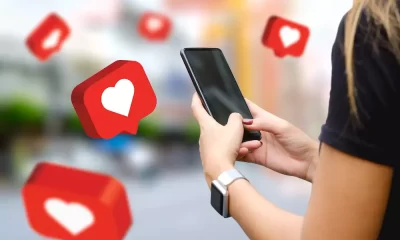Marketing
4 Tips for Organizing an Impactful Conference or Event

Professional conferences and events are fairly common occurrences, no matter your exact industry. But this doesn’t mean they have to be “dime a dozen” – so common and frequent they offer little unique value to attendees.
If you go through the work of organizing a conference or event, you want it to make a real and lasting impact on all who attend. Here are four tips to keep in mind during the event planning stages.
Plan Around Event Objectives
Start by asking yourself: What do we want attendees to take away from this experience? Only then can you set concrete goals and objectives to make your desired outcome a reality. Your theme, goals and objectives will guide other logistics like who you invite to speak, where you hold the conference and what types of sessions you plan.
The more specific your objectives, the better. It’s possible to break a broad idea like “environmentalism in business” into subcategories, like waste reduction, eco-friendly business practices, sustainability initiatives, creating an environmentally conscious company culture, etc. It’s possible to break down these subcategories, even – with more focused topics like corporate recycling initiatives, harnessing solar power, going paperless, educating employees, etc.
Charting out ideas from broad to specific will help you assess which topics are most in line with your event goals.
Curate Your Speaker Lineup Carefully
There are many professionals willing, or eager, to speak at any given conference. But you want to do more than find people to fill slots on a schedule; you’re aiming to curate a lineup of engaging, knowledgeable presenters with valuable information to impart on an audience.
There are a few ways to go about securing speakers for your event. You can approach people directly, explaining the nature of your event and why you feel they’d be an excellent fit. Or, you can put out an open call for proposals and sift through submissions.
Whichever strategy you choose, start early. As one conference creator notes for Smashing Magazine, quality speakers get booked up far in advance.
Build in Networking Opportunities for Attendees
Furnishing a lineup of great speakers is key. But the value your conference attendees derive also depends on who they meet – the lasting connections they make. The best way to help foster these important connections is by building in networking opportunities.
Want to get people talking? Start by using an audience response system like Poll Everywhere to incorporate networking activities during and between presentations. An interactive icebreaker can help create the camaraderie people need to start talking to their neighbors. A team trivia session is a great way to help attendees bond with others in the spirit of friendly competition.
Carve out chunks of time in which people can have a snack, grab a cup of coffee, explore the venue and strike up conversations with others. This “down time” is actually very productive.
Harness Social Media Before, During and Afterward
When people have questions nowadays, it’s almost reflexive to check social media for updates and helpful links. Make sure your conference has a comprehensive social media strategy in place for marketing, providing information and aggregating user-generated content.
As Small Biz Trends points out, events are increasingly “harnessing the viral power of their audience.” People will surely be posting, tweeting and blogging up a storm. Make sure you’ve publicized conference hashtags, and are using your platforms to engage with speakers and attendees alike.
Above all, an impactful conference or event is one from which attendees walk away having learned actionable information and met relevant people. Set objectives, curate a winning lineup of presenters, make it easy for people to network and create a central communications hub across social media platforms.






